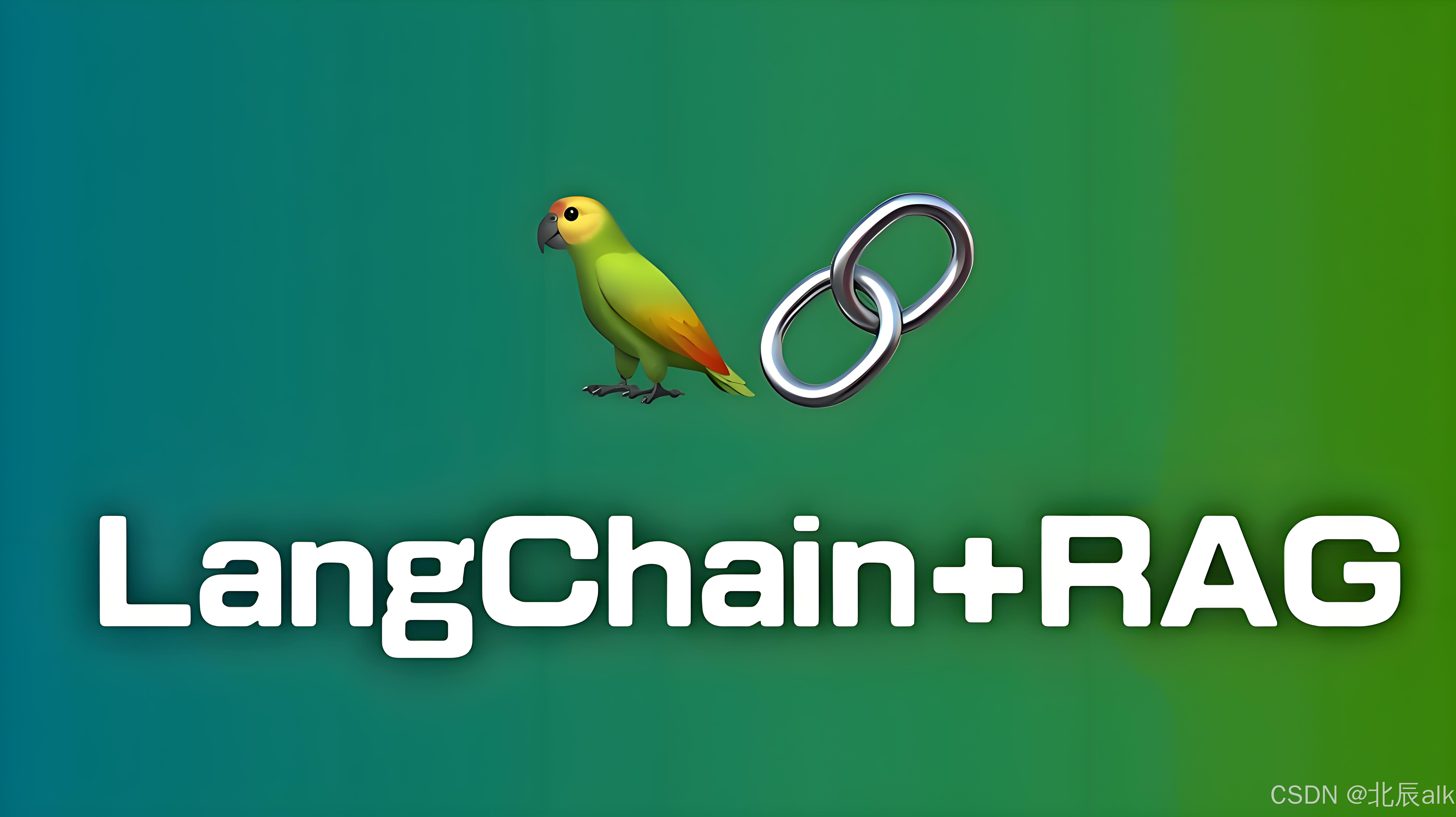LangChain框架中的Chain与Agent详解:从理论到实践
LangChain框架中的Chain与Agent详解:从理论到实践

文章目录
在大语言模型应用开发中,LangChain作为最流行的框架之一,其核心概念Chain和Agent的理解至关重要。本文将深入解析这两个概念,通过丰富的代码示例和实际应用场景,帮助你掌握LangChain的核心机制。
1. 引言:为什么需要LangChain?
随着大语言模型的快速发展,我们面临着新的挑战:如何将LLM与外部工具、数据源和计算资源有效结合?LangChain应运而生,它提供了一个统一的框架来构建基于LLM的应用程序。
1.1 LangChain的核心价值
- 模块化设计:将复杂任务分解为可重用的组件
- 链式调用:将多个组件串联成完整的工作流
- 工具集成:让LLM能够使用外部工具和API
- 状态管理:维护对话历史和上下文信息
2. Chain(链)概念深度解析
2.1 什么是Chain?
Chain是LangChain中最基本的概念,它代表一系列组件的顺序执行。可以将Chain理解为LLM应用的"工作流"或"管道"。
Chain的核心特征:
- 顺序执行:组件按预定顺序执行
- 数据传递:前一个组件的输出作为后一个组件的输入
- 确定性:执行路径在运行时是确定的
- 可组合性:Chain本身可以作为其他Chain的组件
2.2 Chain的工作原理
让我们通过一个流程图来理解Chain的基本工作原理:
2.3 基础Chain类型详解
2.3.1 LLMChain - 最基础的Chain
LLMChain结合了LLM、提示模板和输出解析器,是最常用的Chain类型。
from langchain.llms import OpenAI
from langchain.prompts import PromptTemplate
from langchain.chains import LLMChain
from langchain.schema import BaseOutputParser
import os
# 设置OpenAI API密钥
os.environ["OPENAI_API_KEY"] = "your-api-key-here"
# 自定义输出解析器
class CommaSeparatedListOutputParser(BaseOutputParser):
"""将输出解析为逗号分隔的列表"""
def parse(self, text: str):
"""解析LLM的输出"""
return [item.strip() for item in text.split(",") if item.strip()]
# 创建LLM实例
llm = OpenAI(temperature=0.7)
# 创建提示模板
prompt_template = PromptTemplate(
input_variables=["topic"],
template="请生成关于{topic}的5个相关关键词,用逗号分隔:"
)
# 创建LLMChain
llm_chain = LLMChain(
llm=llm,
prompt=prompt_template,
output_parser=CommaSeparatedListOutputParser()
)
# 使用Chain
try:
result = llm_chain.run("人工智能")
print("生成的关键词:", result)
except Exception as e:
print(f"执行出错: {e}")
2.3.2 SequentialChain - 顺序执行链
SequentialChain允许我们将多个Chain连接起来,形成复杂的工作流。
from langchain.chains import SimpleSequentialChain, TransformChain
import re
# 第一个Chain:生成文章大纲
outline_prompt = PromptTemplate(
input_variables=["topic"],
template="请为关于{topic}的文章生成一个详细大纲,包含主要章节和子主题:"
)
outline_chain = LLMChain(llm=llm, prompt=outline_prompt)
# 转换Chain:清理和格式化文本
def transform_func(inputs):
text = inputs["text"]
# 移除多余的空行和空格
cleaned_text = re.sub(r'\n\s*\n', '\n\n', text)
return {"cleaned_text": cleaned_text}
transform_chain = TransformChain(
input_variables=["text"],
output_variables=["cleaned_text"],
transform=transform_func
)
# 第二个Chain:基于大纲写文章
article_prompt = PromptTemplate(
input_variables=["cleaned_text"],
template="根据以下大纲撰写一篇完整的文章:\n{cleaned_text}\n\n文章内容:"
)
article_chain = LLMChain(llm=llm, prompt=article_prompt)
# 创建顺序链
full_chain = SimpleSequentialChain(
chains=[outline_chain, transform_chain, article_chain],
verbose=True # 显示详细执行过程
)
# 执行完整的工作流
try:
final_result = full_chain.run("机器学习在医疗诊断中的应用")
print("最终生成的文章:")
print(final_result)
except Exception as e:
print(f"链执行出错: {e}")
2.3.3 RouterChain - 路由链
RouterChain根据输入内容决定执行哪个子Chain,实现条件逻辑。
from langchain.chains.router import MultiRouteChain
from langchain.chains.router.llm_router import LLMRouterChain, RouterOutputParser
from langchain.chains.router.multi_prompt_prompt import MULTI_PROMPT_ROUTER_TEMPLATE
# 定义不同领域的提示模板
prompt_infos = [
{
"name": "technology",
"description": "适合技术相关的问题",
"prompt_template": "你是一个技术专家。请用专业的技术语言回答:{input}"
},
{
"name": "business",
"description": "适合商业和市场相关的问题",
"prompt_template": "你是一个商业顾问。请从商业角度分析:{input}"
},
{
"name": "general",
"description": "适合一般性问题",
"prompt_template": "请以友好的方式回答这个问题:{input}"
}
]
# 创建各个领域的Chain
destination_chains = {}
for p_info in prompt_infos:
prompt = PromptTemplate(
template=p_info["prompt_template"],
input_variables=["input"]
)
destination_chains[p_info["name"]] = LLMChain(llm=llm, prompt=prompt)
# 默认Chain
default_chain = LLMChain(llm=llm, prompt=PromptTemplate(
template="请回答这个问题:{input}",
input_variables=["input"]
))
# 创建路由Chain
router_chain = LLMRouterChain.from_llm(
llm,
MULTI_PROMPT_ROUTER_TEMPLATE.format(
destinations="\n".join([f"{p['name']}: {p['description']}" for p in prompt_infos])
)
)
# 创建多路由Chain
multi_chain = MultiRouteChain(
router_chain=router_chain,
destination_chains=destination_chains,
default_chain=default_chain,
verbose=True
)
# 测试路由功能
test_questions = [
"解释Transformer架构的工作原理",
"如何制定数字营销策略",
"今天天气怎么样"
]
for question in test_questions:
print(f"\n问题: {question}")
print("回答:", multi_chain.run(question))
3. Agent(代理)概念深度解析
3.1 什么是Agent?
Agent是更高级的LangChain组件,它让LLM能够自主决定使用哪些工具来完成任务。与Chain的确定性不同,Agent具有决策能力。
Agent的核心特征:
- 自主决策:根据当前状态决定下一步行动
- 工具使用:能够调用外部工具和API
- 迭代执行:通过思考-行动-观察的循环逐步推进
- 不确定性:执行路径在运行时动态决定
3.2 Agent的工作原理
Agent的工作流程可以通过以下状态图表示:
3.3 Agent的核心组件
3.3.1 工具(Tools)
工具是Agent可以调用的外部功能,可以是API、函数、或其他服务。
from langchain.agents import Tool, AgentExecutor, LLMSingleActionAgent
from langchain import SerpAPIWrapper
from datetime import datetime
import math
import requests
# 自定义工具:计算器
def calculator(query):
"""执行数学计算"""
try:
# 移除中文描述,只保留数学表达式
expression = query.replace("计算", "").replace("算一下", "").strip()
# 安全评估数学表达式
allowed_chars = set('0123456789+-*/(). ')
if all(c in allowed_chars for c in expression):
result = eval(expression)
return f"计算结果: {expression} = {result}"
else:
return "错误: 包含不安全的字符"
except Exception as e:
return f"计算错误: {e}"
# 自定义工具:时间查询
def get_current_time(query):
"""获取当前时间"""
now = datetime.now()
return f"当前时间: {now.strftime('%Y-%m-%d %H:%M:%S')}"
# 自定义工具:天气查询(模拟)
def get_weather(city):
"""获取城市天气信息"""
# 这里使用模拟数据,实际应用中可接入天气API
weather_data = {
"北京": "晴,15°C",
"上海": "多云,18°C",
"深圳": "雨,22°C",
"成都": "阴,16°C"
}
return weather_data.get(city, f"未找到{city}的天气信息")
# 创建工具列表
tools = [
Tool(
name="Calculator",
func=calculator,
description="用于数学计算。输入数学表达式如'2+2'或'3*5'"
),
Tool(
name="Time",
func=get_current_time,
description="获取当前日期和时间"
),
Tool(
name="Weather",
func=get_weather,
description="查询城市天气。输入城市名称如'北京'或'上海'"
)
]
3.3.2 代理类型详解
ReAct代理 - 最常用的代理类型
ReAct代理通过Reasoning和Acting的循环来解决问题。
from langchain.agents import initialize_agent
from langchain.agents import AgentType
# 初始化ReAct代理
react_agent = initialize_agent(
tools=tools,
llm=llm,
agent=AgentType.ZERO_SHOT_REACT_DESCRIPTION,
verbose=True,
handle_parsing_errors=True
)
# 测试复杂任务
complex_queries = [
"先计算一下(15 * 4) + (20 / 2)等于多少,然后告诉我现在的时间",
"查询北京的天气,如果是晴天就计算25的平方根",
"现在的时间是什么?如果时间是下午,就计算从2020到2024年有多少年"
]
for i, query in enumerate(complex_queries, 1):
print(f"\n{'='*50}")
print(f"任务 {i}: {query}")
print(f"{'='*50}")
try:
result = react_agent.run(query)
print(f"结果: {result}")
except Exception as e:
print(f"执行失败: {e}")
自定义代理
我们可以创建更专业的自定义代理来处理特定领域的任务。
from langchain.agents import Tool, AgentExecutor
from langchain.schema import SystemMessage
from langchain.prompts import BaseChatPromptTemplate
from typing import List, Union
from langchain.schema import HumanMessage, AIMessage
# 自定义提示模板
class CustomPromptTemplate(BaseChatPromptTemplate):
template: str
def format_messages(self, **kwargs) -> str:
# 格式化提示信息
intermediate_steps = kwargs.pop("intermediate_steps")
thoughts = ""
for action, observation in intermediate_steps:
thoughts += f"行动: {action.log}\n"
thoughts += f"观察: {observation}\n"
kwargs["agent_scratchpad"] = thoughts
formatted_template = self.template.format(**kwargs)
return [HumanMessage(content=formatted_template)]
# 创建自定义代理
custom_prompt = CustomPromptTemplate(
template="""你是一个智能助手,可以访问各种工具来帮助用户。
你可以使用的工具:
{tools}
使用以下格式:
问题: 用户输入的问题
思考: 你需要思考如何逐步解决问题
行动: 要使用的工具名称
行动输入: 工具的输入参数
观察: 工具返回的结果
... (这个思考/行动/观察的循环可以重复多次)
思考: 我现在知道最终答案了
最终答案: 对原始问题的最终回答
开始!
问题: {input}
{agent_scratchpad}"""
)
# 测试自定义代理
from langchain.agents import LLMSingleActionAgent
custom_agent = LLMSingleActionAgent(
llm_chain=LLMChain(llm=llm, prompt=custom_prompt),
output_parser=ReactSingleInputOutputParser(),
stop=["\n观察:"],
allowed_tools=[tool.name for tool in tools]
)
agent_executor = AgentExecutor.from_agent_and_tools(
agent=custom_agent,
tools=tools,
verbose=True,
handle_parsing_errors=True
)
# 测试自定义代理
test_query = "先告诉我现在的时间,然后计算当前时间的小时数乘以60是多少"
result = agent_executor.run(test_query)
print(f"自定义代理结果: {result}")
4. Chain vs Agent:应用场景对比
4.1 何时使用Chain?
Chain适合确定性、可预测的工作流。
Chain的典型应用场景:
# 场景1:文档处理流水线
from langchain.chains import RetrievalQA
from langchain.document_loaders import TextLoader
from langchain.embeddings import OpenAIEmbeddings
from langchain.vectorstores import Chroma
def create_document_qa_chain(file_path):
"""创建文档问答Chain"""
# 加载文档
loader = TextLoader(file_path, encoding='utf-8')
documents = loader.load()
# 创建向量数据库
embeddings = OpenAIEmbeddings()
vectorstore = Chroma.from_documents(documents, embeddings)
# 创建检索Chain
qa_chain = RetrievalQA.from_chain_type(
llm=llm,
chain_type="stuff",
retriever=vectorstore.as_retriever(),
return_source_documents=True
)
return qa_chain
# 场景2:内容生成流水线
def create_content_generation_chain():
"""创建内容生成Chain"""
# 主题生成
topic_prompt = PromptTemplate(
input_variables=["industry"],
template="为{industry}行业生成5个内容营销主题"
)
topic_chain = LLMChain(llm=llm, prompt=topic_prompt)
# 大纲生成
outline_prompt = PromptTemplate(
input_variables=["topic"],
template="为'{topic}'创建详细的内容大纲"
)
outline_chain = LLMChain(llm=llm, prompt=outline_prompt)
# 内容生成
content_prompt = PromptTemplate(
input_variables=["outline"],
template="根据以下大纲撰写完整内容:\n{outline}"
)
content_chain = LLMChain(llm=llm, prompt=content_prompt)
# 组合成顺序链
from langchain.chains import SequentialChain
full_chain = SequentialChain(
chains=[topic_chain, outline_chain, content_chain],
input_variables=["industry"],
output_variables=["text"],
verbose=True
)
return full_chain
4.2 何时使用Agent?
Agent适合需要动态决策、工具选择的复杂任务。
Agent的典型应用场景:
# 场景1:研究助手Agent
def create_research_agent():
"""创建研究助手Agent"""
# 研究工具
def search_research_papers(query):
"""搜索研究论文(模拟)"""
return f"找到关于'{query}'的3篇相关论文: 1. 论文A, 2. 论文B, 3. 论文C"
def summarize_content(content):
"""总结内容"""
summary_prompt = PromptTemplate(
input_variables=["content"],
template="请总结以下内容:\n{content}"
)
summary_chain = LLMChain(llm=llm, prompt=summary_prompt)
return summary_chain.run(content=content)
def compare_concepts(concepts):
"""比较概念"""
compare_prompt = PromptTemplate(
input_variables=["concepts"],
template="请比较以下概念的异同:{concepts}"
)
compare_chain = LLMChain(llm=llm, prompt=compare_prompt)
return compare_chain.run(concepts=concepts)
research_tools = [
Tool(name="SearchPapers", func=search_research_papers,
description="搜索学术论文"),
Tool(name="Summarize", func=summarize_content,
description="总结文本内容"),
Tool(name="Compare", func=compare_concepts,
description="比较不同概念")
]
research_agent = initialize_agent(
tools=research_tools,
llm=llm,
agent=AgentType.ZERO_SHOT_REACT_DESCRIPTION,
verbose=True
)
return research_agent
# 测试研究助手
research_agent = create_research_agent()
research_query = """
研究机器学习中的Transformer架构:
1. 先搜索相关的论文
2. 总结找到的主要内容
3. 比较Transformer与RNN的异同
"""
result = research_agent.run(research_query)
print(result)
5. 高级应用:Chain与Agent的结合
在实际应用中,我们经常需要将Chain和Agent结合起来使用。
5.1 混合架构示例
from langchain.agents import AgentType, Tool, initialize_agent
from langchain.chains import ConversationChain
from langchain.memory import ConversationBufferMemory
def create_hybrid_system():
"""创建Chain和Agent结合的混合系统"""
# 1. 创建对话Chain(有记忆功能)
memory = ConversationBufferMemory(memory_key="chat_history", return_messages=True)
conversation_chain = ConversationChain(llm=llm, memory=memory, verbose=True)
# 2. 创建工具
def handle_conversation(query):
"""处理对话的工具"""
return conversation_chain.run(input=query)
# 3. 将Chain作为工具提供给Agent
hybrid_tools = [
Tool(name="Chat", func=handle_conversation,
description="用于日常对话和上下文交流"),
Tool(name="Calculator", func=calculator,
description="用于数学计算"),
Tool(name="Time", func=get_current_time,
description="获取当前时间")
]
# 4. 创建智能Agent
hybrid_agent = initialize_agent(
tools=hybrid_tools,
llm=llm,
agent=AgentType.CONVERSATIONAL_REACT_DESCRIPTION,
verbose=True,
memory=memory
)
return hybrid_agent
# 测试混合系统
hybrid_system = create_hybrid_system()
# 模拟对话
conversation = [
"你好,我是小明",
"请计算一下25的平方根",
"还记得我的名字吗?",
"现在几点了?"
]
for message in conversation:
print(f"\n用户: {message}")
response = hybrid_system.run(input=message)
print(f"助手: {response}")
6. 性能优化和最佳实践
6.1 Chain优化技巧
# 1. 缓存优化
from langchain.cache import InMemoryCache
from langchain.globals import set_llm_cache
# 启用缓存
set_llm_cache(InMemoryCache())
# 2. 批量处理
def batch_process_chain(chain, inputs):
"""批量处理Chain任务"""
results = []
for input_text in inputs:
result = chain.run(input_text)
results.append(result)
return results
# 3. 错误处理和重试
from tenacity import retry, stop_after_attempt, wait_exponential
@retry(stop=stop_after_attempt(3), wait=wait_exponential(multiplier=1, min=4, max=10))
def robust_chain_execution(chain, input_data):
"""带重试机制的Chain执行"""
try:
return chain.run(input_data)
except Exception as e:
print(f"Chain执行失败: {e}")
raise
6.2 Agent优化策略
# 1. 工具优化
def create_optimized_agent():
"""创建优化后的Agent"""
# 工具描述优化
optimized_tools = [
Tool(
name="PreciseCalculator",
func=calculator,
description="执行数学计算。输入应该是纯数学表达式,如:(15 + 3) * 2"
),
Tool(
name="AccurateTime",
func=get_current_time,
description="返回当前的精确日期和时间,格式为YYYY-MM-DD HH:MM:SS"
)
]
# 使用更高效的代理类型
optimized_agent = initialize_agent(
tools=optimized_tools,
llm=llm,
agent=AgentType.STRUCTURED_CHAT_ZERO_SHOT_REACT_DESCRIPTION,
verbose=True,
max_iterations=5, # 限制最大迭代次数
early_stopping_method="generate" # 提前停止策略
)
return optimized_agent
7. 总结
7.1 核心要点回顾
Chain的特点:
- 确定性执行流程
- 适合结构化任务
- 性能可预测
- 易于调试和测试
Agent的特点:
- 动态决策能力
- 适合复杂、开放性问题
- 能够使用外部工具
- 更具灵活性
7.2 选择指南
| 场景特征 | 推荐选择 | 理由 |
|---|---|---|
| 固定工作流 | Chain | 执行路径确定,性能稳定 |
| 需要工具选择 | Agent | 动态决策使用哪个工具 |
| 简单数据处理 | Chain | 结构清晰,易于维护 |
| 复杂问题解决 | Agent | 需要多步推理和工具使用 |
| 实时性要求高 | Chain | 执行时间可预测 |
| 探索性任务 | Agent | 路径不确定,需要灵活性 |
7.3 实践建议
- 从Chain开始:对于大多数业务场景,先尝试用Chain解决
- 渐进式复杂化:当Chain无法满足时再引入Agent
- 混合使用:在复杂系统中结合Chain和Agent的优势
- 监控和评估:建立完善的监控体系来评估系统性能
通过本文的详细讲解和丰富示例,相信你已经对LangChain中的Chain和Agent有了深入的理解。在实际项目中,根据具体需求灵活选择和组合这些组件,将帮助你构建出更加强大和智能的LLM应用。
欢迎在评论区分享你的LangChain使用经验和遇到的问题! 🚀
更多推荐
 已为社区贡献6条内容
已为社区贡献6条内容









所有评论(0)